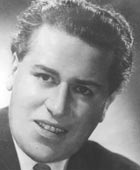|
The British Open Brass
Band Championships.
82nd Spring Brass Band Festival
The Winter Gardens Blackpool
Saturday, May 11th 2002
The Test Pieces:
Checkmate, Bliss arr Eric Ball
Carnival Romain, Berlioz arr Frank Wright
Un Vie de Matelot, Robert Farnon
Date Posted: 09.05.02
Checkmate - Sir Arthur Bliss arranged Eric Ball
 Arthur
Bliss was born in London in 1891 and died there in 1975. He was
knighted in 1950 and appointed Master of the Queen’s Music
in 1953, following the death of Sir Arnold Bax. For over 50 years
he remained an influential figure in the English musical scene. Arthur
Bliss was born in London in 1891 and died there in 1975. He was
knighted in 1950 and appointed Master of the Queen’s Music
in 1953, following the death of Sir Arnold Bax. For over 50 years
he remained an influential figure in the English musical scene.
He regarded himself very much as a “professional” composer
and as such his reputation has been built on a number of very well
written, yet popular works. He remained a man who sought happiness
in all that he did and who concluded in his autobiography “
the odds against happiness can be so menacingly and terribly weighted
that I doubt whether I should wish to be born again. But in this
life of mine…… I have had much to be grateful for. I had
a father that I could have wished, and I have a wife and two daughters
that I could have wished. Grandchildren live to carry the link from
me to the future, and fortune has permitted me to work at what I
love best - music”.
The ballet “Checkmate” was first performed at the Theatre
de Champs - Elysee in Paris in the Summer of 1937.
It is a somewhat disturbing score, alert and incisive, harshly brilliant;
it establishes a steely hold on the emotions, yet through its unyielding
exterior there seeps a sense of ruthlessly objectified compassion.
The composer himself used the following word to describe the story
behind his work: “ You see the pieces assembling in their order,
first of all, light hearted pawns, pages attending the knights to
come. Then the four knights leap on, two in red and gold and two
in black and silver; They challenge each other to feats of daring,
while the pages applaud their skill and courage. The Black Queen
enters majestically - the Red Knights and pawns remain spellbound
under the influence of the most dangerous piece on the board. She
is like a fierce lynx or leopard, at one time purring, at another
baring her claws. She hypnotises one of the Red Knights with her
power and beauty and throws him a rose, which he wears in his armour.
The game is long and fierce, in the fight when the Red Knight has
the Black Queen at his mercy he hesitates to kill her and is himself
treacherously stabbed by her in the back.
The red pieces have been swept from the board, and the Black are
attacking the final citadel of the Red King. He is old and feeble
and can do little to protect himself. Gradually his enemies close
in on him. At the moment of death the old King has a vision of himself
as a young and strong ruler, and turns at bay. But the ring of his
foes is too strong. He is struck down. It is Checkmate!”
Sounds familiar eh? - Women always come out on top! So, that’s
the story behind a very exciting piece - and one that will certainly
test the stamina of all the bands who will be striving to gain a
qualification place for the British Open.
The arrangement by Eric Ball was undertaken for the National Brass
Championships of Great Britain, which was held at the Royal Albert
Hall on Saturday 7th October 1978. The contest saw 20 bands take
part (Dalmellington from Scotland withdrew) and the title was won
by Yorkshire Imperial Metals under the direction of Denis Carr,
who played off number 9 to gain 194pts and beat Besses O'’th'’Barn
and Roy Newsome (off number 1) into second place, a further two
points behind and with Grimethorpe and Stanley Boddington a further
point back in third. Walter Hargreaves took Fairey’s in fourth
place, Jim Scott led Fodens into fifth and St. Dennis and Eddie
Williams filled sixth spot.
The winners took home £500 and the men in the box were Prof. Cedric
Thorp Darby, Albert Chappell and Col. George Evans. How things have
changed eh?
The original arrangement was in four movements, but due to perceived
time constraints, only three of the movements were used - the same
as today, and so the bands now perform for contest purposes “Dance
of the Four Knights” - approximately 4 minutes in length, “Ceremony
of the Red Bishops” - 3.15 and the Finale “Checkmate”
- 3.50. The “Red Knights Mazurka” - 3.40 is dropped -
which is a great pity, because it is neither too long and is perhaps
technically the hardest section of the work.
The piece is quite short by today’s standards with it lasting
in its abridged form around 11 minutes, and even adding the extra
movement it would only by 14 and a half minutes in duration. Why
the extra movement has not been included is therefore a bit of a
mystery to us. Thus, we are left with a fine arrangement of a powerful
bit of writing, that becomes two movements that are loud (very loud
most probably by some bands) and one short quiet movement. It would
have been so much a better test if the extra bit was added. Could
the organisers offer an explanation?
The piece itself has also been somewhat overlooked as a set work
ever since that 1978 National, and we struggled to find occasions
when it had been chosen elsewhere. The last movement was a popular
“finisher” for many years at Entertainment contest - including
the famous occasion at Spennymoor when a leading conductor forgot
to bring the band in on the last note and turned to face the audience
whilst his players were left in limbo - lungs full and ready to
let rip. The middle movement has sporadically been heard as well,
but overall the piece has been living on too many band shelves gathering
dust for too many years. It is a welcome revival.
It should sort out the best from the rest, but be warned! - it could
be a very loud and hurtful experience on the ears, as it is a piece
that could well be blown to smithereens if MD’s decide to try
and power their way the Symphony Hall. Lets hope the judges penalise
the folly of that strategy and reward the bands that make dramatic
music from a worthy test.
Carnival Romain, Berlioz arranged Frank Wright
 In
complete contrast to the set work for the Grand Shield, Frank Wright’s
arrangement of the Berlioz overture, “Carnival Romain”
has become a classic (and well worn) test of bands ever since it
made its first appearance as the test piece at the 1966 National
Finals. GUS Footwear won that contest on the day under the direction
of the late, great Stanley Boddington, beating Black Dyke and Fairey
into the bargain. In
complete contrast to the set work for the Grand Shield, Frank Wright’s
arrangement of the Berlioz overture, “Carnival Romain”
has become a classic (and well worn) test of bands ever since it
made its first appearance as the test piece at the 1966 National
Finals. GUS Footwear won that contest on the day under the direction
of the late, great Stanley Boddington, beating Black Dyke and Fairey
into the bargain.
From that day on it has been seen as an ideal test of the very best
bands, and it was subsequently used as the set test for 1979 Open,
which was memorably won by Fairey Engineering under Walter Hargreaves
and the Pontins Championships in 1983, won by the Jones and Crossland
Band. It was also used at these Championships as the Grand Shield
test piece in 1991, when Whitburn took the title back to Scotland.
It is however very much a brass band arrangement of its time. Frank
Wright went through a whole gamut of composers works - Berlioz being
just one and although the piece remains a favourite with banding
audiences, it must be said that it isn’t perhaps a great arrangement
of the work per se. It was written at a time before the advent of
percussion as an integral part of brass bands make up, and at a
time when the approach to writing and arranging for band personnel
was completely different. By the standards of today’s writing
and willingness of composers to explore the colour and timbre of
all the instruments of the band, the piece can sound rather bland
in hue, but that doesn’t take away from the excitement the
piece can generate.
The technical aspects of the piece remain difficult to this day
though and the euphonium, soprano and flugel will all have to be
on top of their game to ensure success for the bands. There are
a number of little corners at the ends of phrases especially that
will have to be watched and the back row cornets won’t enjoy
their parts.
Musical Directors will also have to curb any tendency to try and
win things with speed alone, as the excitement of the music can
be generated even through a slightly more steady tempo. Clean and
accurate technique in the quicker sections allied to balance in
dynamics could be a better course of action. Listen out for some
very difficult sop and solo cornet links at the Allegro Vivace,
and a real bitch of a part for the sop just before figure K (a series
of octave jumps in groups of quavers - not many will be able to
play it cleanly if the tempo is on the high side)
Lots of great, exciting stuff - and mostly loud will see a number
of bands making a good bash of things, but it could well be the
bands that make the most of the difference in dynamics, clean technique
and lack of splits that will win a place at the Grand Shield in
2003.
Un Vie de Matelot, Robert Farnon
 The
bands wishing to take the first step up the divisions towards the
ultimate prize of playing at the British Open will surely be cursing
however chose Robert Farnon’s “Un Vie de Matelot”
- for it is one hell of a difficult piece. The
bands wishing to take the first step up the divisions towards the
ultimate prize of playing at the British Open will surely be cursing
however chose Robert Farnon’s “Un Vie de Matelot”
- for it is one hell of a difficult piece.
Commissioned for the National Finals of Great Britain in 1975, the
Canadian composer gave the banding world one of the most original
and witty compositions, that had beautiful tunes, tricky technique
and a test of lip sapping stamina for players that even 27 years
later will see off more than a few.
On that day, it was Black Dyke under their new Musical Director,
Major Peter Parkes that won the day by 3 points from Stanshawe and
Brighouse and Rastrick, but the memory of the win for many was the
sublime cornet playing of Philip McCann in the long expressive solo
that won Dyke the title.
Since then it has appeared occasionally rather than regularly, and
it was the test piece for the Grand Shield in 1988 (won by CWS Glasgow)
and the Regional Championships in 1995. It was also somewhat comically
used a couple of years ago as a second section work at the Mineworkers
- with predictable results.
The piece is basically a series of variations on a theme - a theme
set out right at the start in brilliant fashion by the soprano cornet
- a tune that any sop player can recite in his sleep. It immediately
sets out a picture of life on the ocean wave - at times jolly, capricious
and carefree, at others dark, subdued and reflective and finally
exultant, majestic and glorious. It is a great piece of descriptive
writing.
Each of the variations tests the sections of the bands in turn,
with the euphonium, horn and baritones all with little turns on
the yardarm - but it is the elongated soprano solo and the huge
cornet solo that are the focal points of the piece. Both will require
players of secure technique and inherent musicality to bring off,
with the sop solo starting in the middle register - a minefield
for tuning problems.
The cornet solo however is a real test of style and stamina for
the player. Some will of course find help from the “bumper
up” who may fill in here and there - but that for us is an
opt out that should be penalised; this is a test for the Principal
Cornet, and if your bands isn’t up to it, then you shouldn’t
expect success. It is integral to the piece and when it comes off
it is a glorious section of expressive writing and one that any
top class player should enjoy. There will be casualties for sure,
but there will also be some superb playing as well.
After that it’s a long, long cruise for home and a test of
stamina for any band. Try and blow your way to victory and you will
come a cropper on the rocks way before the end. It will require
skill and quality playing to maintain the sound and build towards
the climax of the work and the last few lines will see the top cornets
and sop in particular up in the crows nest of the register. The
last few bars are huge and the sop will need a lip like iron to
make the final Forte Piano top C sing. There will be many good performances
of the piece, but how many real top class ones we think?
Good luck to everyone, and enjoy a great piece of writing. It will
certainly sort out the best bands from the rest.
©
4BarsRest
 back
to top back
to top
|
|

